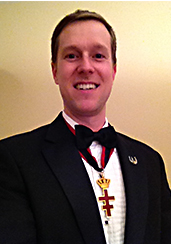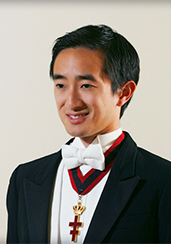The purpose of this document is to provide answers to some of the more basic questions that come up with regard to the foundation and its operations, goals, objectives, and methodologies. It is not meant to provide answers to specific donor situations or specific endowments since each endowment situation within our foundation structure is required to be individually addressed as each endowment carries with it certain required restrictions and those restrictions are tailored to each specific organization depending upon what programs and projects are to be endowed. Without a full understanding and mutual agreement as to these restrictions, the potential exists for improper actions or spending by the endowed organization that could result in the termination of that endowment rather than it remaining in place “in perpetuity”.
1. Can you provide a short overview of the foundation that answers the “who, what, when, where, why, and how” of the organization and its purpose, goals, and objectives?
Who: The Admiral James J. Carey Foundation was founded by Rear Admiral [Ret.] James J. Carey to provide a structure whereby, after he has cared for his wife and family during their lifetimes, his estate could be used to endow certain organizations whose work he felt deserved endowment and long term support. Both of his daughters are involved in managing the organization with him, and there are portions of the foundation that provide for endowments in their names and in the name of Admiral Carey’s wife, Arlene. There is also a portion of the foundation’s funds set aside each year for new, discretionary endowments and short term projects for organizations or programs that are deserving of such funding.
What: The Foundation is structured as a 501.c.3 Internal Revenue Service approved private foundation. While there are provisions where others can donate into the foundation as a “home” for an endowment they would like to create without having to go through the cost and time of establishing their own foundation, the bulk of the Admiral Carey Foundation effort is being funded by Admiral Carey and the assets that he has accumulated through his lifetime of business and investment.
When: Admiral Carey’s Trust to provide for handling his entire estate after his passing was put in place in 2006. He is the sole trustee during his lifetime, with provisions in place for his two daughters to take over the operation and management of the Trust should he become infirmed, or immediately upon his death if not already done. The intention is to provide minimal funding for the Admiral Carey Foundation in the near term and so long as the tax laws remain in place that are in place in 2007. Those laws expire in 2010 and unless the Congress extends them, they revert back to the previous status quo, which may then result in parts of the estate being donated to the foundation while Admiral Carey is still alive. No matter which tax laws are in existence after the Admiral’s death, a significant portion of his estate will be donated to the foundation upon the death of his first daughter, and the balance of the estate will be donated to the foundation on the death of his remaining daughter.
Where: The Admiral Carey Foundation is located in the Commonwealth of Virginia and is subject to those State laws with regard to taxes and foundations. Virginia law pretty much says, in essence, that their estate taxation and foundation taxation shall be governed by the same “caps and upper limit” criteria as is used by the federal government and the IRS, and that brings us right back to the current status of the federal government estate tax laws and whether the Congress extends the current laws or lets them expire. Perhaps the best answer to how all this will be handled is “stay tuned”.
Why: Admiral Carey spent over forty years of his life serving on a broad base of Boards of Directors of various organizations, institutions, foundations, charities, and federal policy groups. He has described those experiences on occasion as being “the good, the bad, and the ugly”. During that extended service, he experienced good managers and bad, responsible board members and “the other kind”, patriots and egomaniacs, some truly good human beings and also others whose greed and lack of vision cause him to take a deep breath of disgust to this very day. As such, he has determined that there are organizations that he will not give a penny to, there are others he plans to endow in support of very specific programs, and there are a select few that he wishes he could give even more to. Each of his endowments will be “in perpetuity”, as will those in the names of his daughters and his wife, and no new endowments will be considered in these four endowment paths after the death of the namesake of the endowments. But there will always be a portion of the Admiral Carey Foundation available for discretionary endowments in future generations that will be as decided by future trustees and boards of directors of the Foundation.
How: The 501.c.3 Internal Revenue Service filing for the Foundation outlined a system whereby each endowment by the Admiral Carey Foundation will require a specific written proposal from the organization being endowed, a specific written agreement with both the Admiral Carey Foundation and the organization being endowed committing to follow and enforce the restrictions of the endowment. Endowed organizations who do not carry out the provisions of the signed endowment agreement will find their endowment terminated without opportunity for future restoration.
2. You state that “the Admiral Carey Foundation endowments are in perpetuity”. How can you guarantee that?
While there are no guarantees in life [the earth could blow up or the USA and thus this foundation somehow ceases to exist, etc.], there are some basic parameters that govern the Admiral Carey Foundation that makes it’s ability to provide endowments in perpetuity not only likely, but a certainty so long as the Foundation AND the endowed organizations adhere to the Admiral’s basic tenants.
A: The Admiral Carey Foundation is not permitted to distribute [translation = use] more than 5% of their total assets in any given year, including their expenses to operate the foundation. This is the exact same annual distribution that is a requirement of the IRS 501.c.3 classification. Admiral Carey has maintained a net return on his assets and investments that has averaged over 10% per year for the past 15 years, and he requires this same level of performance within the foundation’s investments. Thus if the foundation is earning over 10% on it’s assets each year and only distributing 5% each year, then the foundation will continue to grow “in perpetuity”, and thus, so will the foundation’s endowments.
B: Having served on numerous boards of directors and watched them struggle to resist spending more of their endowments than they should each year [which the Admiral calls “the save us from ourselves syndrome”], a key restriction in EVERY Admiral Carey Foundation endowment will be that the endowed organization MUST create a “fenced entity” within their own 501.c.3 structure into which the Admiral Carey Foundation endowment is deposited each year when received. The endowed organization is then restricted from spending more than 5% of that entities assets in any given year, so that pool of assets will also continue to grow in perpetuity and the restriction in the endowment requiring them to adhere to this restriction or lose the endowment is the motivational backbone to help the governing bodies of these organizations “to be saved from themselves”.
C: Each endowed organization will be required to realize earnings on the Admiral Carey endowment funds in excess of 5% each year, so that just as the Admiral Carey Foundation will continue to grow each year, and the Admiral Carey Foundation’s endowment to the organization will thus increase each year, so also will the pooled assets of the Admiral Carey endowment to each organization increase each year because they are earning more than 5% on the funds and are restricted from using more than 5% of those funds in any given year.
3. Given the structure of the Admiral’s Trust and the Admiral Carey Foundation, when do the Carey Foundation endowments begin?
To a degree, that takes us back with the IRS and the Congress and the existing tax structure that is due to expire in 2010 unless extended by the Congress. It is those tax laws that determine whether the bulk of the Admiral’s estate remains in his trust to care for his wife and children and when a portion of that estate needs to be donated to the foundation should the current tax laws either change or expire? And then there’s that tricky little detail regarding none of this taking place until the Admiral’s passing, a matter he has made clear to us he has no intention of speeding up just so an organization’s endowment can begin arriving sooner.
So what makes the most sense for right now is probably to deal with the present as the tax laws exist today. This means that none of the endowments will begin until the Admiral’s death, and that the focus during his lifetime will be to negotiate and structure the endowments into a written agreement signed by both parties that outlines the restrictions to the endowment and the requirements for performance by the endowed organization if the endowment is to remain in place in perpetuity. Depending upon the date of the Admiral’s death and the value of his estate at the time, whether his wife predeceases him or is still alive, and whether one or both of his daughters is still alive all impacts upon what amount is donated into the foundation upon his death and what amount needs to remain in the trust to support his wife and daughters until the last daughter dies.
4. Please explain further how the Admiral’s endowments differ from his wife’s endowments and the discretionary endowments?
The basic structure of the foundation is meant to provide for members of the family to take part in “giving back” to America in return for the privilege of living in America and growing up in freedom, free enterprise, and a free society. There are five segments to the foundation, in part to provide for specific funding in the name of various family members and also to provide a portion of the available funds for new programs and projects at the discretion of the foundation’s board of directors. While the internal designation of these five segments of the foundation are called trusts, this does not mean that they are in any way trusts as viewed under IRS regulations or tax law; rather, this term is merely to signify that these five categories are “entrusted” to the foundation Board of Directors as segmented and separate from each other and “fenced” in order to be used as each trust designates. Since the four trusts named after family members are meant to be “in perpetuity”, those endowments are designated as a percentage of their trusts portion of the foundation’s total assets. A graphic presentation follows:

A. All endowments of the Rear Admiral James J. Carey Trust are to be documented in writing during the Admiral’s lifetime, are designated as a percentage of his trust, and are not allowed to be changed nor any new organization endowments made from these funds following the Admiral’s death.
B. All endowments of the Lynn Margaret Carey Trust are to be documented in writing during her lifetime, are designated as a percentage of her trust, and are not allowed to be changed nor any new organization endowments made from these funds following her death.
C. All endowments of the Arlene Patricia Carey Trust are to be documented in writing during her lifetime, are designated as a percentage of her trust, and are not allowed to be changed nor any new organization endowments made from these funds following her death.
D. All endowments of the Sarah Ann Carey Trust are to be documented in writing during her lifetime, are designated as a percentage of her trust, and are not allowed to be changed nor any new organization endowments made from these funds following her death.
E. All endowments of the Admiral Carey Discretionary Trust are to be documented in writing, are made at the total discretion of the Admiral James J. Carey Foundation Board of Directors, are designated as a percentage of this trust, and may be for programs and projects of any length of time so long as they do not exceed the annual spending cap which applies to the entire foundation and each trust within the foundation.
Given the above structure for the foundation, the following are proforma examples for each $10,000,000 in foundation assets:
| Admiral JJC | Lynn | Arlene | Sarah | Discretionary | |
| Annual Value: | $7,000,000 | $500,000 | $500,000 | $500,000 | $1,500,000 |
| 5% For Distribution: | $350,000 | $25,000 | $25,000 | $25,000 | $75,000 |
| Annual Endowment In Perpetuity: | |||||
| At the 10% level: | $35,000 | $2500 | $2500 | $2500 | $7500 |
| At the 5% level: | $17,500 | $1250 | $1250 | $1250 | $3750 |
Current asset earnings are approximately 10% per year. Thus if 5% is distributed each year in endowments, this still provides for a 5% growth per year in the asset values of the foundation, thereby providing for an approximate 5% rise each year in the annual endowments of the foundation. At an annual growth rate of 5% compounded, the foundation’s assets double in value after 15 years or so and then redouble every 15 years thereafter in perpetuity—– as a result, a 10% level endowment from the Admiral Carey Trust that is $35,000 per year grows to $70,000 by 15 years later, $140,000 per year approximately 15 years after that, and to $280,000 just 15 years or so after that, and so on in perpetuity. As such, it doesn’t take too long for these endowments to become very significant money, since each endowment is structured to be provided annually in perpetuity so long as the recipient organization strictly adheres to the endowment parameters and restrictions agreed to with the Admiral James J. Carey Foundation. For annual returns less than 10%, just reduce the growth figures accordingly and expect the foundation’s investment advisors and portfolio managers in place in those years to be seeking new employment.
5. Does your foundation engage in fundraising?
No. The intent is that the Admiral James J. Carey Foundation will be 100% funded from Admiral Carey’s estate as outlined above. That said, the Admiral has already had discussions with two colleagues who have indicated a desire to donate to the foundation rather than go to the expense of setting up their own foundation. In such cases, the Admiral has determined that the minimum donation that will be accepted for named endowments is $50,000. The rationale for this minimum is that at 5% per year that under IRS regulations MUST be distributed, that means that a $50,000 donation provides an annual endowment of $2500, and that is what this foundation feels is a minimum amount that will provide funding that can accomplish something of substance. Since this foundation’s focus is primarily on youth programs, internships, and fellowships, we know from experience that $2500 will cover the cost of one intern for 2 ½ months. As such, we do not want to have to deal with the accounting and management of any lesser amounts. Such donations would be “fenced” and can be named after the donor, and under the systemics described above, can provide an endowment “in perpetuity” in the name of that donor.
For anyone that wants to donate less than $50,000 and understands that donation will go into the Admiral Carey Discretionary Trust, those donations become a part of these funds with the basic donation always growing and thus “giving in perpetuity”.
6. Is there a deadline for filing endowment applications?
No. Endowment reviews are on-going and conducted throughout the year. Endowments are designated in percentages of the foundation’s distributable assets [remember the 5% annual cap?] so that they are applicable in perpetuity and easily determined. Endowments made in the names of Admiral Carey or his wife or daughters may not be changed after their deaths, but the Admiral Carey Foundation will always have access to the pool of funds designated as discretionary and those endowments will be made annually for the life of the foundation, which is structured to be in perpetuity.
7. Who may we contact if we have questions that this document doesn’t address?
If you know Admiral Carey or his wife or his daughters personally, you are welcome to contact them. If you do not know them, then you are requested to submit your questions in writing via e-mail to [email protected] Tax matters are referred to the foundation’s tax attorney for response.
Download Word Document: AJJC Foundation Q & A (doc)

![Rear Admiral [Ret.] James J. Carey](/wp-content/uploads/2012/07/JJCbeachHeader.jpg)


